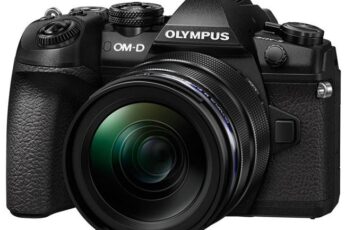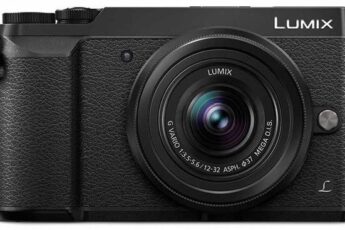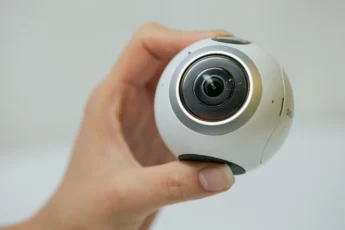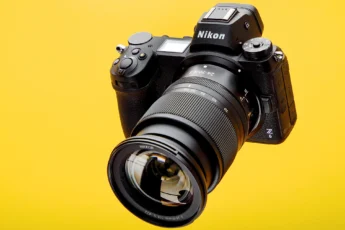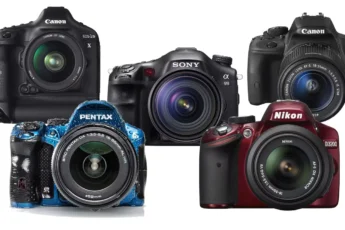Nikon and Canon, the major DSLR manufacturers, have a rather lackluster selection of mirrorless cameras. But the Olympus mirrorless line has a variety of excellent features. Many have built-in image stabilization and a fairly large selection of lenses. The Olympus OM-D E-M10 Mark III is an excellent entry-to-intermediate level mirrorless camera. Let’s explore what this camera has to offer.
Have you already read this review and are ready to make your purchase?
- Technical Specifications
- Build Quality
- Image Quality
- What additional features does the Olympus OM-D E-M10 Mark III have?
- Image Stabilization
- Composition Features
- Videography Features
- Improved Memory Card Compatibility
- How does the Olympus OM-D E-M10 Mark III compare to the Sony a6300?
- Advantages of the Olympus OM-D E-M10 Mark III
- Advantages of the Sony a6300
- How does the Olympus OM-D E-M10 Mark III compare to the E-M10 Mark II?
- Who is the Olympus OM-D E-M10 Mark III for?
- Conclusion
Technical Specifications
- Price: from $499.00 body-only, from $499.00 with kit lens, memory card, and carrying case
- Kit Lens: M.ZUIKO ED 14-42mm F/3.5-5.6 EZ lens. “ED” describes the extra low dispersion glass used by this lens to improve image sharpness. “EZ” refers to the motor driven Electronic Zoom.
- Sensor: 16.1 megapixel sensor (Micro 4/3rds sized 17.4 x 13.0 mm)
- Number of Autofocus Points: 121 Contrast detection points. Contrast detection uses the image generated by the sensor to search for maximum contrast. The AF system searches for the highest possible tonal difference between image pixels.
- Built-In Flash: Yes, with 5.0 m (16.4 foot) range at ISO 100. This ISO value is the lowest level of light sensitivity. Raising the ISO will increase the flash detection range.
- Continuous Shooting: 8.6 frames per second
- ISO Range: 200-25,600, with digital drop down to ISO 100. Unlike a digital boost, which raises ISO beyond the native ISO value, a digital drop is a form of improved noise control. ISO 100 is useful for capturing especially clear pictures in bright lighting.
- Video Recording Capability: 4K 3840×2160 (30, 25, 24 fps), Full HD 1920×1080 (60, 50, 30, 25, 24 fps), HD 1280×720 (60, 30, 25, 24 fps)
- Image Format: JPEG and RAW. JPEG is the image format used for display with most devices. Being a compressed format, JPEGs have a smaller file size at the cost of image quality. RAW is the format that contains all of the original image data from the camera. RAW files can only be read by photo editing software. RAW files are much larger than JPEG files but are the best for image editing.
- Wireless Connectivity: Yes; Wi-Fi and QR (quick response) scan. Smart devices with QR scanning apps installed can use the picture code generated by the Mark III to sync the two devices. The camera can be remote controlled using the Olympus Image Share App available for Android and iOS. This app can also add GPS locations to photos or send pictures from your camera to your smart device.
- Supported Memory Cards: SD, SDHC, SDXC, UHS-I, UHS-II
- Battery Life (CIPA Rating): 330 images per charge
- Weight: 410 g (0.90 lb / 14.46 oz)
- Dimensions: 122 x 84 x 50 mm (4.8 x 3.31 x 1.97 in)
Build Quality
The OM-D line of Olympus all have a vintage SLR film camera look. The metal chassis and leather grained texture around the body give it a premium feel. The Mark III is a camera that just feels great to shoot with. The right side of the top of the camera has three dials. One controls the various shooting modes. And the other two control exposure, including shutter speed and aperture. The 1,040,000 pixel LCD can tilt up or down to provide better viewing angles, but is not fully articulating. The LCD is also a touchscreen, allowing the user to select autofocus points for the camera to focus on. And the user can even activate the shutter with a touch.
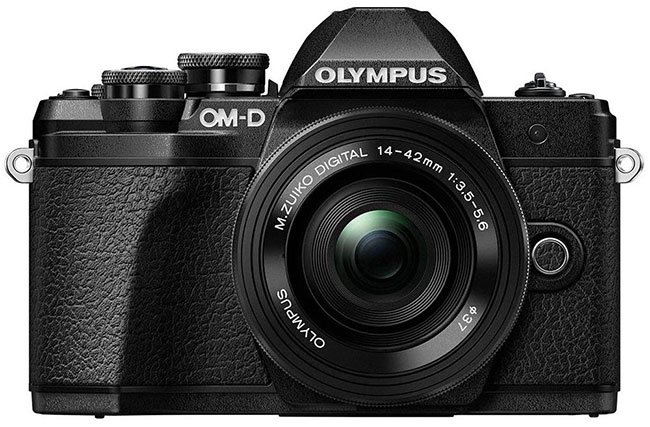
Image Quality
16 megapixels is an acceptable number for most photographers. It allows for printed photos up to 11″ x 16″ at 300 pixels per inch. More megapixels would actually be a potential problem with the medium sized Micro 4/3rds sensor (sized 17.4 x 13.0 mm). Larger sensors like APS-C (23.6 x 15.6 mm) and full-frame (36 x 24 mm) are better for higher megapixel counts. This is because pixel “quality” is as much a factor as pixel count for image quality. The more pixels a sensor has, the smaller they need to be to fit together. And smaller pixels not only capture less light but can cause interference with one another. So given the balance between pixel count and pixel size, 16 MP is spot on for the Micro 4/3rds line.
The E-M10 Mark III has a 121-point contrast detection based autofocus system. Contrast detection AF has superior accuracy over phase detection based AF. The camera analyzes the image being generated by the sensor for optimum contrast. The more intense the differences in tone are between individual pixels, the more contrast the image contains. While the less in-focus the image is, the more similar the tones across pixels will appear. Because the lens has to pan in-and-out to find the exact point of optimal focus, it’s slower than phase detection.
Phase detection uses paired AF points that act as single points. Each pair can detect differences in the phase of light reaching them. If the pairs detect differences between them, the camera will adjust the lens focus until they match. Phase detection is not as accurate but it’s faster, especially in low light situations. Despite this, the Mark III will have little difficulty in most shooting situations.
The M.ZUIKO ED 14-42mm F3.5-5.6 EZ lens that comes with the E-M10 Mark III is also worth discussing. The Mark II came with a lens that looks as you’d expect any kit lens to look. But the EZ lens of the Mark III is what’s called a pancake lens. It has a typical diameter, but the lens is about half as thick as the Mark II’s 14-42mm f/3.5-5.6 II R lens. The EZ pancake lens weighs 93 grams and is 22.5 mm thick when fully retracted. For comparison, the 14-42mm f/3.5-5.6 II R lens of the Mark II weighs 113 g and is 48.3 mm thick. Portability and convenience are the key advantages of pancake lenses.
Most pancake lenses on the market today are prime lenses, which don’t zoom. They have a constant focal length. But this zoom pancake lens is small enough to keep the Mark III pocket-sized even with the lens attached. Many mirrorless cameras on the market are pocketable, but only after the lens is removed. And the reduced size of the EZ lens means that’s less space and weight in the camera bag as well.
There are only a few downsides to consider. Pancake lenses as a whole tend to have slightly more vignetting in photographs. Vignetting is a noticeable darkening around the borders of the image. Image sharpness is also not as clean as regular zoom lenses. Both are due to the optical compromises necessary to make a lens that compact. Lastly, pancake lenses can be slightly difficult to manually focus for some people. The front of the lens is so close to the camera body; it can feel awkward for people used to traditional lenses. But as an interchangeable lens camera, the idea is to expand beyond the kit lens anyways. So it’s not really a downside of the camera.
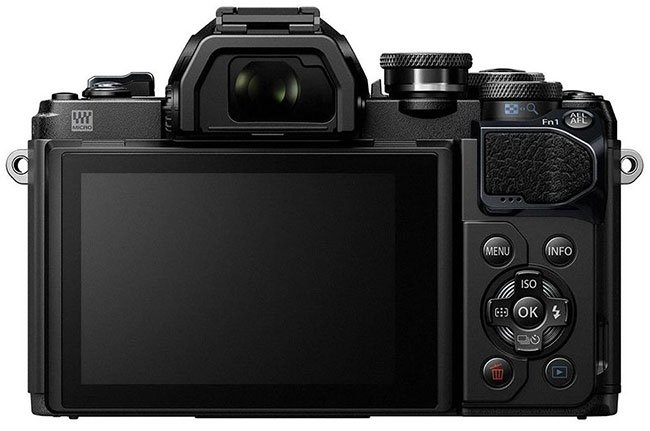
What additional features does the Olympus OM-D E-M10 Mark III have?
Image Stabilization
Olympus mirrorless cameras have some of the best built-in image stabilization available at this price range. Sensor stabilized camera models generally start closer to $1,000. The 5-axis image stabilization of the Mark III is useful because it works with any lens attached to the camera. And many Olympus lenses also come with in-lens IS elements as well, which works together with with the IS of the Mark III. The lens mounts of Panasonic’s Micro 4/3rds line are fully compatible with the Mark III as well. And many of these also have in-lens IS. But they are not guaranteed to work properly with Olympus’s in-body IS. Some do and others do not. It’s best to contact the manufacturer if you decide to mix Olympus and Panasonic lenses and bodies.
Like the Mark II, the Mark III provides up to four stops of Image Stabilization. “Stops” are related to the amount of light entering the camera. Stops are used in the three elements of the exposure triangle: aperture, ISO, and shutter speed. And in this case, it’s referring to the shutter speed usable with Image Stabilization. Each stop of light is a doubling or halving of the light entering the camera. Say I have a scene where I need a shutter speed of 1/1000ths of a second to avoid blur from hand shake. Four stops of image stabilization allows the user to shoot slower than 1/1000ths of a second. Down past 1/500ths and 1/250ths to 1/60th of a second with the same chance of image blur. For photographers who prefer to shoot handheld, the advantages are obvious.
The Mark III also has an electronic shutter, which allows it to shoot faster and silently when engaged. The mechanical shutter has a maximum shutter speed of 1/4000ths of a second. The electronic shutter maxes out at 1/16000ths of a second.
Composition Features
The has some intriguing composition options. Like most of the newest interchangeable lens cameras on the market, it has an HDR (high dynamic range) photography mode. HDR photography, when used with a tripod and the right scenes, makes for stunning photography. The camera takes three images, each with an adjusted exposure setting (exposure affects the overall brightness of the image). And then by combining the three, the result is a composite image with enhanced details in the highlights and dark shadows.
Live Composite Mode is a feature that’s useful for capturing changes in intense light over time. The camera will take pictures using a preset number of captures and time period. And with each picture taken, the camera adds pixels from new light sources. For example, when shooting star trails, the camera uses a base photo of the stars in their current position. As the stars move with the earth’s rotation, the camera adds them to the base photo, creating a composite image. The word Live is in the name because you can watch the image take shape on the LCD and change settings as needed. Live Composite is also great for fireworks displays, allowing the photographer to create a photo with multiple bursts in a single image. Because it’s capturing the same scene repeatedly, a tripod is also necessary with this mode.
The Mark III also has focus bracketing. The camera takes a series of photos where the spot the camera focuses on is adjusted after each image. Some of the higher end models like the OM-D E-M1 Mark II have focus stacking. Focus stacking first brackets a series and then combines the photos into a single image with greater depth of field. The E-M10 Mark III user can focus stack images by combining them with computer software. Or the user can simply select their favorite image out of the bracketing series. Focus bracketing is a great feature for macro photography lovers.
Videography Features
4K video is slowly becoming more widely available in lower priced mirrorless cameras. This is perfect for photographers who also want the highest video quality.
The stereo microphone of the Mark III ensures recorded sound captures the audio complexity of the real world. Mono recording only has a single sound channel. Mono audio recording is great for interviews. But doesn’t create a sense of being in that location like the more complex audio of stereo does.
The Mark III also has a timelapse movie mode that can compress slow scenes into one faster video. Timelapse movie is available at 5 frames per second at 4K resolution. The Mark III also supports 5/10/15 fps at Full HD resolution and 5/10/15/30 fps at HD resolution. For slowing down scenes, the Mark III also offers High Speed Video mode for slow motion playback.
Improved Memory Card Compatibility
The UHS-II compatibility of the Mark III is a welcome addition. Faster cards are useful when shooting high quality video or using continuous shooting in RAW mode. A 10-second 4K video clip can take up as much as 100 MB of space. And RAW files can be as large as 60 MB each. This will fill the camera buffer quickly, slowing down the capture rate unless the memory card can be written to fast enough. With slower writing SD cards, it will be harder to sustain the max burst rate of 22 RAW or 36 JPEG images. If you use slower cards, it may be better to reduce continuous shooting speed to 4.8 fps. This speed has no buffer limit so long as the card can keep up.

How does the Olympus OM-D E-M10 Mark III compare to the Sony a6300?
Sony and Olympus have some of the finest mirrorless cameras on the market right now. And the Sony a6300 is one of the best available. Both cameras are upgrades that improved upon the already impressive Olympus OM-D E-M10 Mark II and Sony a6000. How do these two lightweight mirrorless powerhouses match up?
Advantages of the Olympus OM-D E-M10 Mark III
Price: With a price of from $499.00 body-only, the Mark III has an edge over the a6300, which sits at from $748.00. With kit lenses, the Mark III is from $499.00 and the a6300 is from $748.00.
Composite Photography Options: Focus bracketing is a useful creative tool that many photographers enjoy using, especially macro photography lovers. Live Composite mode is unique to Olympus. Street and astrophotographers will get a lot of use out of this one. The a6300 does not have these options.
5-axis Image Stabilization: Built-in image stabilization usable with every lens you attach to the camera is an amazing feature. Most cameras rely on in-lens IS elements or have none at all. This is a clear win for the Mark III.
UHS-II Support: While both have 4K video and RAW continuous shooting modes, the Mark III supports faster SD cards. The a6300 supports UHS-I cards, which are still faster than non-UHS SD cards.
Advantages of the Sony a6300
Resolution: 16 megapixels is enough for most photographers. But the 24 MP of the Sony a6300 gives more room for cropping and is better for larger print sizes.
Larger Sensor: The larger APS-C sensor of the a6300 gives it better noise and depth of field control.
Autofocus System: With 121 Contrast detection AF points, the Mark III is no slouch. But the Sony a6300 has an astounding 425 phase detection and 169 contrast detection points. This type of hybrid AF system is fast and accurate with most subjects in nearly all lighting conditions.
Environmental Sealing: While not fully weatherized, the Sony a6300’s design gives it superior resistance to dust and moisture.
Battery Life: At 400 images per charge, the a6300 has more staying power. The Mark III maxes out at 330 images per charge.
The race is close overall. Both cameras have features that are hard to ignore. The Sony a6300’s key strength lies in its autofocus system. The massive number of AF points help it track subjects quickly and effectively. Even if they leave the frame, the a6300’s Lock-on AF intelligently keeps track of the subject. Its stamina and environmental sealing are also handy features in any camera.
The Olympus E-M10 Mark III’s strengths are its built-in Image Stabilization and competitive price tag. Hand shake will reduce image sharpness in even the best lighting. Having image stabilization consistently is amazing if you’re not constantly using a tripod or monopod. The composition options and UHS-II support are must-haves for many photographers. But the two cameras also share many features, including 4K video resolution and a similar number of lens options. A strong case can be made for either of these fine cameras.

How does the Olympus OM-D E-M10 Mark III compare to the E-M10 Mark II?
The E-M10 Mark III is more of a modernization than a sweeping upgrade. But there’s just enough new features for a Mark II user to consider making the swap. One major difference is the upgrade to 4K video with the Mark III. Four times the video resolution is a big deal for videography oriented photographers. Another is the number of extra autofocus points. 121 autofocus points vs 81 is a significant increase, though both cameras have a good number to work with. The battery life of the Mark III is only 10 shots greater than the Mark II, so little change there. And the continuous drive speed of the Mark III is boosted slightly to 8.6 frames per second compared to 8.5 fps for the Mark II.
Another key difference is the inclusion of the 14-42mm ED F/3.5-5.6 EZ pancake lens with the Mark III. The Mark II uses the 14-42mm f/3.5-5.6 II R lens. The portability of the kit lens is definitely an advantage. But the vignetting and slight loss of sharpness of the EZ kit lens may be off-putting to some users. Also, the Mark III’s UHS-II support makes it the better choice when shooting 4K video or using continuous drive. Interestingly, the Mark III does not support SD video at 640×480. The majority of users won’t be using this low of a resolution anyways.
A slight loss for the Mark III is that it’s purely contrast detection based. The Mark II uses a hybrid AF system, with 37 phase detection points supplementing its 81 contrast detection points. Hybrid systems have the advantage of speed and accuracy. The phase detection elements use speed to approximate the correct focus. And the contrast detection quickly narrows down focus. But in most shooting environments and with most subjects, the Mark III and II will provide identical results.
Sometimes minor updates like this one are priced unreasonably high upon release. But Olympus is keeping the Mark III release at an attractive, affordable price for the beginner-intermediate market.
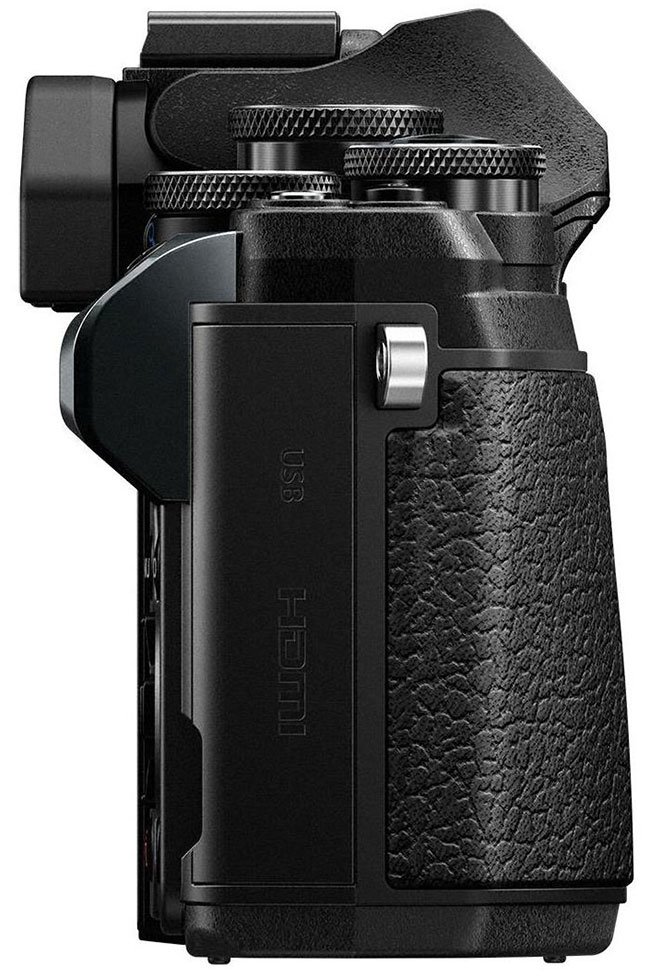

Who is the Olympus OM-D E-M10 Mark III for?
The E-M10 Mark III’s combination of features and design make it a great choice for any skill level of photography. Three control dials may feel a bit complex to absolute beginners. And they may not get the full value from many of the Mark III’s functions. But it’s not a camera that they will outgrow anytime soon. Intermediate and professional photographers will enjoy the customizability of its design. The sensor stabilized contrast detection based system makes it a fantastic handheld portrait camera. Event photographers will need at most a monopod, but can get crisp, clear pictures even shooting handheld. And its compactness makes it great for casual shoots. Lastly, anyone upgrading from the Mark II will find the Mark III has enough new features to justify the cost.
Conclusion
At first glance, the OM-D E-M10 Mark III seems like a lackluster camera. It’s resolution, sensor size, and other common comparison statistics don’t seem attractive. But upon closer inspection, it has the features you’d expect of higher end cameras, like 4K video and built-in image stabilization. Many mirrorless cameras at this price tier don’t even have electronic viewfinders. But the Mark III ensures users used to traditional shooting styles will find it comfortable and intuitive to use.
The Mark III has some exciting features, especially compared to the models offered by Nikon and Canon. Olympus seems focused on the improvement of its mirrorless line. That makes this brand one of the best to build a lens collection around. Whether you’re looking to buy a new camera or upgrade from the Mark II, the E-M10 Mark III is an excellent purchase.

